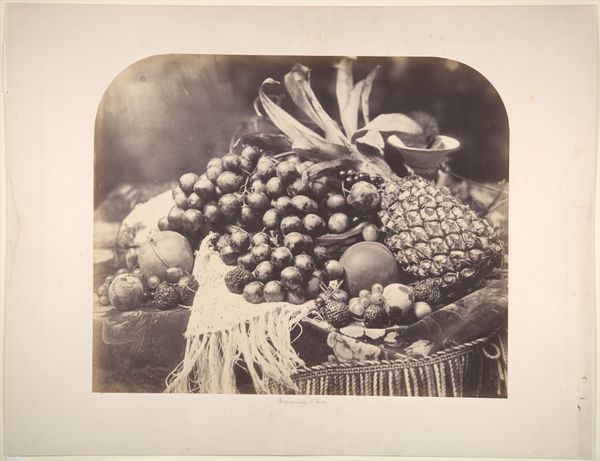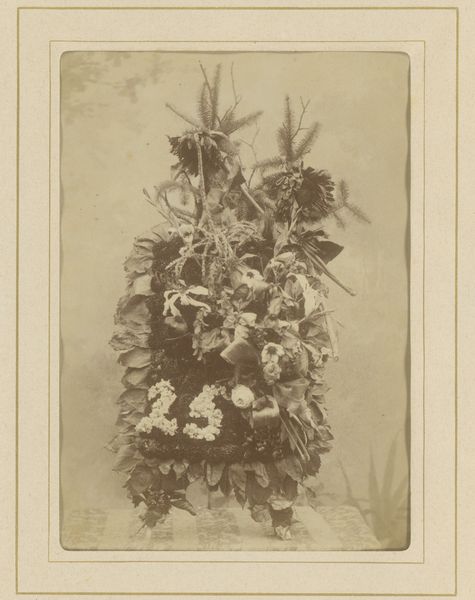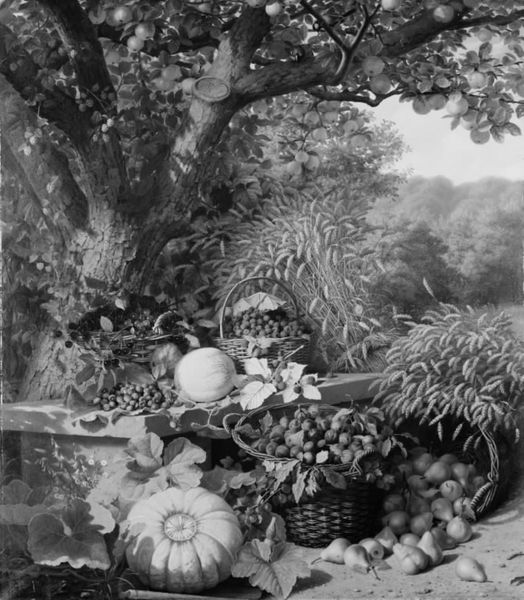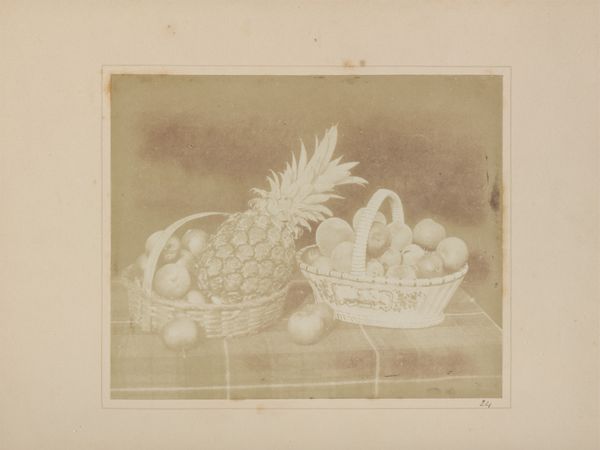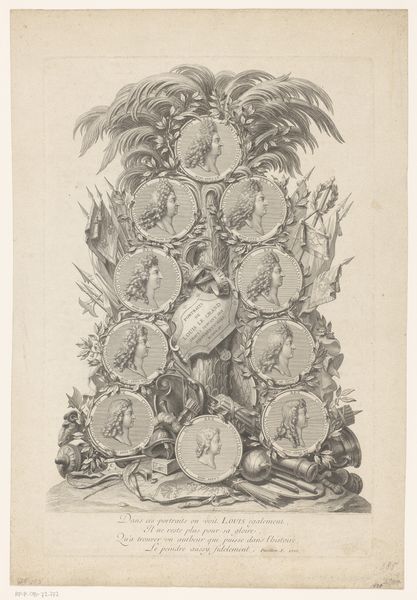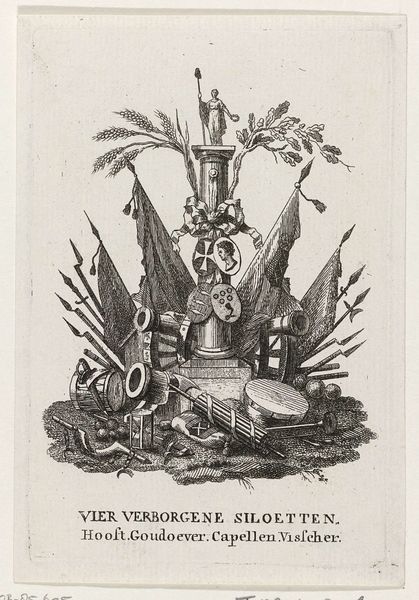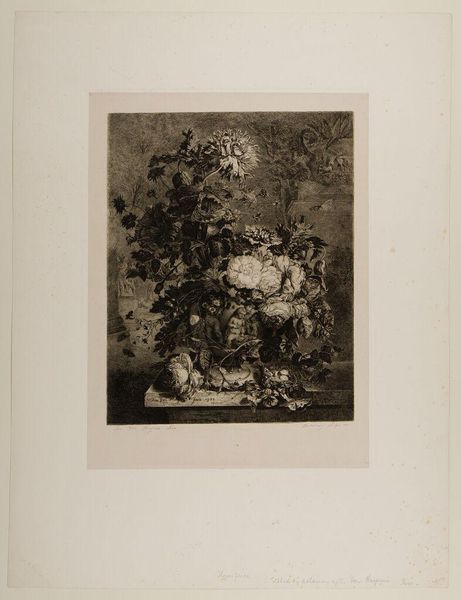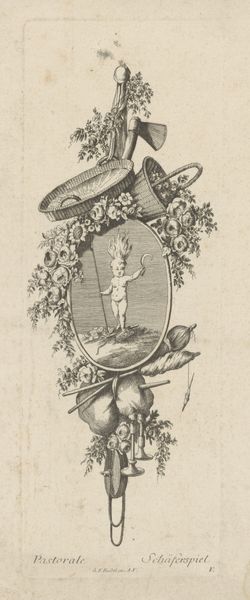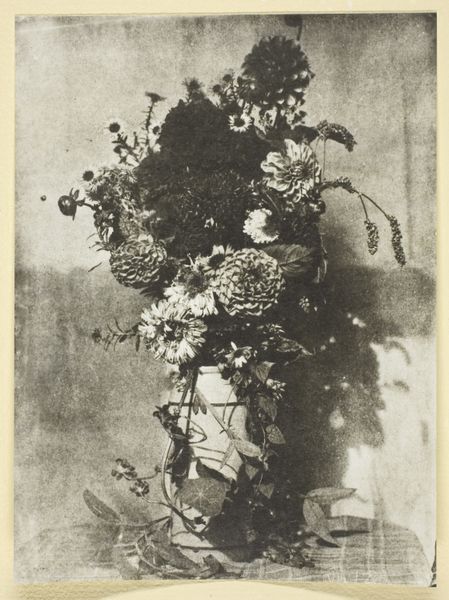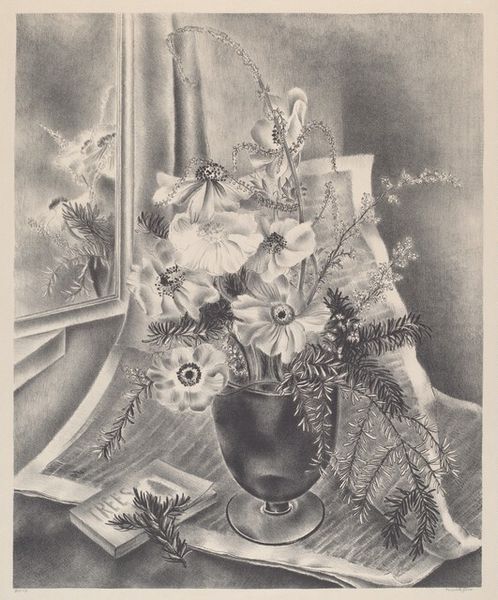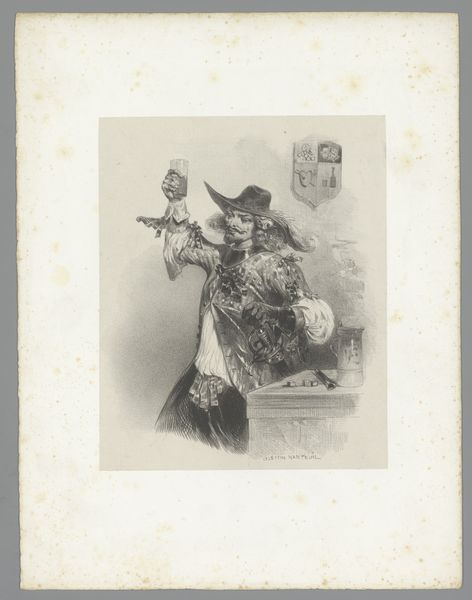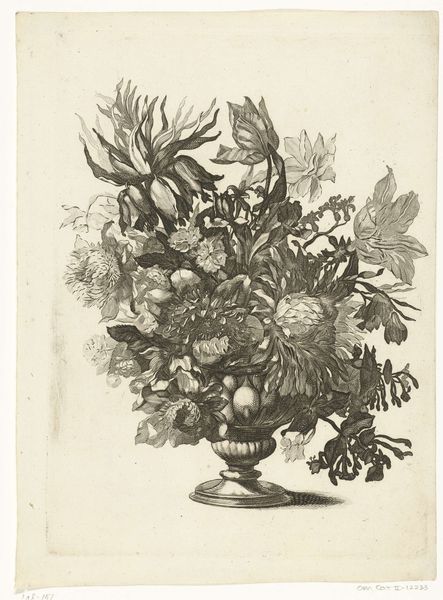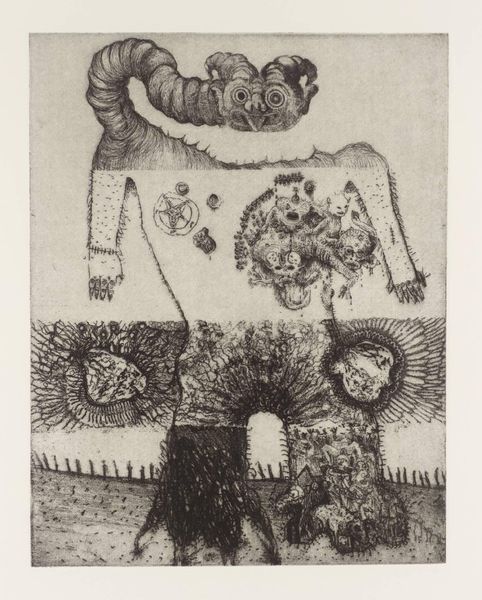
photography, albumen-print
#
still-life-photography
#
photography
#
albumen-print
Dimensions: height 92 mm, width 157 mm
Copyright: Rijks Museum: Open Domain
Editor: This albumen print by Woodbury & Page, titled *Stilleven van tropische vruchten*, or Still Life of Tropical Fruits, was made sometime between 1870 and 1880. It's quite striking, almost theatrical, with this mountain of fruit arranged so deliberately. What do you make of it? Curator: It's more than just a still life. It’s a carefully constructed presentation of colonial abundance intended for a European audience. How are these tropical commodities being viewed, who is benefitting from their harvest, and where are these photos being displayed? I'd suggest that these elaborate displays functioned as advertisements for the exotic riches that Dutch colonialism provided. Editor: An advertisement, really? That’s interesting, I hadn't considered it in that light. Curator: Absolutely. Remember, photographs like this circulated widely in Europe as postcards and in albums. The photographers capitalized on European interest in their colonies, presenting a view of easily available resources. Who profits is left unseen, obscured from this constructed abundance. Note the inclusion of what appear to be vases as if filled with flowers. Does this change the photo from commercial venture to decoration for you? Editor: Well, now that you mention it, the ornate tablecloth and the vases definitely give it an air of staged respectability. It's like saying, "See, we're not just exploiting, we're appreciating these goods, bringing civilization." Curator: Exactly. Consider how it reflects the politics of imagery and its intended public role during that period. It reinforces a particular, very deliberate narrative of colonial power. It is an act, where these items serve as actors, no? Editor: It’s remarkable how a simple still life can reveal so much about historical power dynamics. It definitely challenges the innocent perspective I initially had. Curator: Precisely, seeing it with that critical lens changes everything. What at first looks like an artistic snapshot actually reveals much deeper societal and power structures when carefully viewed through a historical lens.
Comments
No comments
Be the first to comment and join the conversation on the ultimate creative platform.
